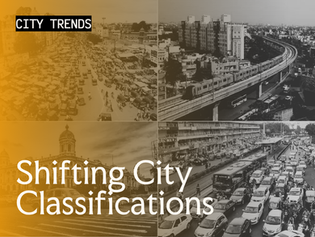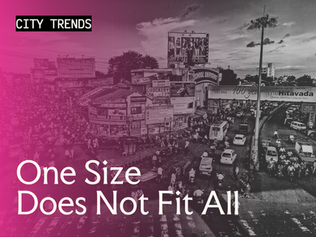top of page


To Cooperate Or Not To Cooperate? That Is The Question
Cooperative banks in India, initially formed to cater to underserved communities, are now facing pressures to commercialise and compete with larger, profit-driven banks. While their growth reflects trust and success, the shift towards commercial models threatens the social welfare principles that founded them. The question remains: Should cooperatives evolve into commercial entities, or should they stay rooted in community service, preserving their founding ideals? The future
Sep 4, 20196 min read


Nagar Trends: Power of a Nagar
Cities in India have long been shaped by constitutional changes, but how much power do they really have? Our pan-India study with Praja Foundation is digging deep into the reality of urban governance, exploring the gap between what’s on paper and what’s happening on the ground. From administrative control to actual decentralisation, the study unveils surprising insights. Are our cities truly empowered, or just caught in the maze of state control?
Mar 1, 20195 min read


2018: A Year Of Cities And Citizens
2018 was a year where cities in India took center stage: politically, economically, and socially. From rising citizen participation to international partnerships, urban life saw transformative change. With rankings, policies, and citizen-led initiatives making waves, cities found their voices louder than ever. As cities continue to evolve, how ready are they to meet the challenges of tomorrow in and inclusive and sustainable manner?
Jan 14, 20196 min read


Finding Citizens!
From the Magna Carta to India’s 74th Amendment, cities have long shaped the rules of governance and democracy. But despite efforts to empower urban local bodies, is real power truly in the hands of the people? With evolving forms of citizen participation and the rise of new technologies, cities are redefining what it means to be a democratic space. What role will cities play in the future of democracy?
Dec 5, 20185 min read


Sanitation Sparking Change
From the turn of the 19th century to today, public health in urban spaces has been shaped by both reform and crisis. The shift in responsibility from state to local bodies has given rise to innovative solutions in cities, big and small, across India. In embracing cleaner, more sustainable practices, how are cities redefining local governance’s role in urban health? And what does this shift mean for the cities we often overlook?
Nov 1, 20183 min read


Making Public Toilets Work
Public toilets in India are more than just a convenience; they are essential for public health, dignity, and urban mobility. Yet, poor maintenance and user perceptions continue to hinder their effectiveness. As cities expand and innovate, can better upkeep, creative partnerships, and smarter designs finally change how we think about public sanitation? The answer might just reshape the way we view these essential urban spaces.
Feb 1, 20186 min read


Shifting City Classifications
India's urban classification is a patchwork of definitions, from Census-based statutory and census towns to RBI's tiered system and the Ministry of Finance's city grading. This fragmented approach influences policy decisions, urban planning, and financial allocations. But are these varied hierarchies keeping pace with India’s rapid urbanization? The inconsistencies in classification continue to shape urban development and the push for a more cohesive, data-driven urban policy
Jan 1, 20173 min read


One Size Does Not Fit All
Nagpur and Shimla may both be Tier-I cities, but that label tells us little about their unique challenges. India’s cities vary vastly in size, climate, and function. So urban diversity can’t be captured by population alone, but that’s how cities are often categorised. Could a better system help craft smarter policies? Rethinking city classification might just be the key to unlocking more effective urban planning.
Dec 24, 20163 min read


Small City Vision Beyond The Big City Blueprint
Small cities in India are often seen as future big cities, but this mindset overlooks their unique challenges and rich heritage. Instead of imposing big-city solutions, why not let these cities thrive on their own terms? From historic cores to niche economies, small cities deserve tailored strategies that nurture their distinct identities. Could embracing local knowledge be the key to a sustainable urban future?
Dec 18, 20162 min read
bottom of page